American Nazis And German American Bund Adolf Hitler Greatest Story Never Told
Adenoid Hynkel, Chaplin's caricature of Hitler, delivers a speech in German-sounding gibberish in this clip from The Great Dictator. American Nazis And German American Bund Since the mid-20th century, the world has only ever heard one side of an incredible story. The story of a boy from an ordinary family whose ambition it was to become an artist, but who instead became a drifter. His destiny however was not to drift into the awaiting oblivion, but to rise to the greatest heights of power, eventually to become one of the most influential men who ever lived.
Now for the first time, here is a documented account of a story many believe to be… The Greatest Story NEVER Told! Learn the untold story about the most reviled man in history. Adolf Hitler, The Greatest Story Never Told is a 6-hour Documentary by Truth Will Out Films. This ground-breaking documentary chronicles the rise of Germany from defeat in World War I, to communist attempts to take over Germany; hyperinflation during the Weimar Republic, widespread unemployment and misery, and Adolf Hitler’s rise to power.
So This 6 Hrs. Video Is Now Removed By Rumble 4 ? ?
To See This Video Link Below 2 See It Thanks ! - https://archive.org/details/adolf-hitler-the-greatest-story-never-told - or at - https://www.bitchute.com/video/xWf3nNEqcgHK/
It also reveals a personal side of Adolf Hitler: who he was, his family background, his artwork and struggles in Vienna and what motivated him to come to power. There’s so much hidden history to recount; FDR Pearl Harbor conspiracy, Soviet brutality, betrayal and treachery on all sides. Do we really know the true cost of war? Do we really possess all the facts? Watch this series and uncover the real root causes of World War II. Do your own research and decide what you choose to believe. Think differently.
https://www.census.gov/content/dam/Census/library/working-papers/2002/demo/POP-twps0056.pdf
What is Antifa? Is it a group or an idea, and what do supporters want?
Antifa has seen a steady increase in media attention ever since former President Donald Trump took office in January 2017. Republicans often portray antifa as a highly organized group of "terrorists" worthy of national watch lists. Some conspiracy theorists falsely blamed antifa for the January 6 Capitol riots that led to five deaths.
Right-wing media blames antifa members for rioting and looting. Democrats have also condemned such violence, but many on the left say the rhetoric about antifa is greatly exaggerated, and that it's less of an organized movement than just something of "an idea."
But much of what politicians say about antifa isn't quite true. Here's what antifa is, what it isn't, and what you need to know.
Anti, anti, anti...
Antifa is not a highly organized movement, nor is it merely an idea. Antifa is a loose affiliation of local activists scattered across the United States and a few other countries.
The term "antifa" is short for anti-fascist; it's used both by its adherents and its foes.
In general, people who identify as antifa are known not for what they support, but what they oppose: Fascism, nationalism, far-right ideologies, white supremacy, authoritarianism, racism, homophobia and xenophobia. Some antifa activists also denounce capitalism and the government overall.
Mostly, people aligned with antifa are on the left of the political spectrum. Antifa is not, however, affiliated with President Joe Biden, the Democratic Party or its leaders. Mr. Biden has condemned antifa and called violence "unacceptable."
Antifa actions have included everything from tracking and publicly identifying members of alt-right groups to physically attacking adversaries.
In "Antifa: The Anti-Fascist Handbook," author Mark Bray, an organizer for the Occupy Wall Street movement, lays out antifa's methods this way:
"Despite the media portrayal of a deranged, bloodthirsty antifa… the vast majority of anti-fascist tactics involve no physical violence whatsoever. Anti-fascists conduct research on the far right online, in person, and sometimes through infiltrations; they dox them, push central milieux to disown them, pressure bosses to fire them…
"But it's also true that some of them punch Nazis in the face and don't apologize for it."
During public demonstrations, antifa activists often wear top-to-toe black; even before the coronavirus pandemic, they were also known for wearing face coverings at public gatherings.
Antifa has no official national leadership, though followers have organized themselves into small, local cells that sometimes coordinate with other movements, such as Black Lives Matter. Some self-described antifa adherents have organized to confront Patriot Prayer, the Proud Boys, and other far-right groups during public demonstrations. Some of those rallies have devolved into violence.
Some antifa adherents keep a very low profile, while other local groups venture to give themselves a more public profile with a name and a website. One of the oldest such groups appears to be Rose City Antifa, which says it was founded in Portland, Oregon, in 2007. According to its website, its main focus is "any work that prevents fascist organizing, and when that is not possible, provides consequences to fascist organizers. This is supported by researching and tracking fascist organizations."
Antifa in prime time
Over Mr. Trump's years in office, coverage of "antifa" skyrocketed in the mainstream press. That coverage started on the day of his inauguration, when dozens of people took to the streets of the nation's capital in a protest that would soon grow violent. Authorities would later arrest several dozen of them, many of whom later identified themselves as antifa, and accuse them of starting fires and riots. Charges were eventually dropped for the bulk of the defendants, while others were acquitted by juries.
Mr. Trump pointed a finger at what he called the "alt-left" following the infamous "Unite the Right" rally in Charlottesville, Virginia in 2017. After a white supremacist deliberately plowed his car into a crowd of counter-protesters, killing a woman named Heather Heyer, Mr. Trump sparked more outrage when he suggested an equivalency between the white supremacists and the protesters on the other side, who despite his claims were mostly peaceful.
"What about the alt-left that came charging at, what you say, the alt-right?" Mr. Trump wondered aloud. "Do they have any semblance of guilt? What about the fact they're charging with clubs in their hands, swinging clubs, do they have any problem? I think they do."
In the years since then, media coverage has identified antifa as participants, and sometimes agitators, in clashes at numerous rallies and protests around the country. That includes a 2017 anti-hate rally in Berkeley, California, and a Patriot Prayer "freedom rally" in Portland, Oregon, in 2018.
In at least one instance, a person self-identifying as an antifa supporter has been linked to a deadly attack at a protest. Michael Forest Reinoehl, 48, was considered a prime suspect in the August 2020 killing of 39-year-old Aaron "Jay" Danielson, a right-wing activist who was shot during heated demonstrations in Portland. Reinoehl was later shot to death by federal authorities as they moved to arrest him.
Reinoehl had described himself in a social media post as "100% ANTIFA."
The "T" word
In the summer of 2019, Republican Senators Ted Cruz and Bill Cassidy introduced a resolution calling for antifa to be labeled as a domestic terror organization. President Trump voiced his support on Twitter.
But at the time, the Trump administration's own Department of Homeland Security and FBI didn't appear to view antifa as a leading threat. A DHS draft document from September 2020 reportedly named white supremacist groups as the biggest terror threat to America. That same document doesn't mention antifa at all.
The FBI also considers far-right groups the "top of the priority list." FBI director Christopher Wray said in February 2020 that the FBI places the risk of violence from racially-motivated extremist groups "on the same footing" as the threat posed by foreign terrorist organizations such as ISIS and its sympathizers.
That's not to say the FBI hasn't also taken aim at antifa. After arson and looting broke out amid the protests in Minneapolis following the death of George Floyd, Wray said: "We're seeing people who are exploiting this situation to pursue violent, extremist agendas — anarchists like ANTIFA, and other agitators. These individuals have set out to sow discord and upheaval, rather than join in the righteous pursuit of equality and justice."
But the idea of designating antifa a terror group worries some civil rights advocates.
"The designation would grant federal law enforcement broad powers, under the federal terrorism code, to surveil and investigate anyone labeled as antifa," the Southern Poverty Law Center said in a statement. "It could also allow federal law enforcement to broadly target anyone involved in protests viewed unfavorably by the Trump administration, even retroactively."
The center added, "President Trump's announcement is rooted in politics, not the present realities of the terror threat in the U.S."
False flags
Antifa has earned its reputation for sporadic violence. But many other rumors about antifa have been spun from whole cloth, sometimes by people later identified as right-wing extremists. In June 2020, Twitter shut down multiple fake antifa accounts that were inciting violence against white suburbs; subsequent investigations tracked the accounts to Identity Evropa, a white supremacist organization.
Right-wing figures and other commentators on social media also have falsely accused unspecified antifa members of starting wildfires on the West Coast, prompting police and fire officials to appeal to the public to stop spreading what one agency called "an UNTRUE rumor."
Another common conspiracy theory has alleged, without evidence, that billionaire philanthropist George Soros is funding antifa.
Fresh attention after Capitol riots
After the January 6 Capitol riots that left five dead, including a Capitol police officer, false rumors claimed antifa was behind the attacks. In fact, among the hundreds of criminal complaints filed so far, dozens involve suspects affiliated with right-wing organizations including Oath Keepers, Proud Boys, Three Percenters, and pro-Trump followers of the QAnon conspiracy theory, according to federal prosecutors.
One alleged rioter reportedly told friends that he planned to pose as antifa to fool law enforcement.
"When we looked at the data around the insurrection, we saw literally millions of pro-Trump [internet] posts that repeated the phrase 'antifa,'" said CBSN tech reporter Dan Patterson. "[But] when we look at the data, this boogeyman is nonexistent."
American Nazis in the 1930s Thru Today The German American Bund Is Alive And Well In 2024 ? So Is Black Lives Matters And Antifa The New American Nazi's? How to Distinguish Between Antifa, White Supremacists, and Black Lives Matter ?
In the years before the outbreak of World War II, people of German ancestry living abroad were encouraged to form citizens groups to both extol “German virtues,” around the world, and to lobby for causes helpful to Nazi Party goals. In the United States, the Amerikadeutscher Volksbund, or German American Bund, was formed in 1936 as “an organization of patriotic Americans of German stock,” operating about 20 youth and training camps, and eventually growing to a membership in the tens of thousands among 70 regional divisions across the country. On February 20, 1939, the Bund held an “Americanization” rally in New York’s Madison Square Garden, denouncing Jewish conspiracies, President Roosevelt, and others. The rally, attended by 20,000 supporters and members, was protested by huge crowds of anti-Nazis, who were held back by 1,500 NYC police officers. As World War II began in 1939, the German American Bund fell apart, many of its assets were seized, and its leader arrested for embezzlement, and later deported to Germany.
Nearly 1,000 uniformed men wearing swastika arm bands and carrying Nazi banners parade past a reviewing stand in New Jersey on July 18, 1937. The New Jersey division of the German-American Bund opened its 100-acre Camp Nordland at Sussex Hills. Dr. Salvatore Caridi of Union City, spokesman for a group of Italian-American Fascists attending as guests, addressed the bund members as "Nazi Friends."
German American Bund Camp youth salute Hindenburg in Griggstown, New Jersey.
Members of the German-American Bund form a guard of honor before the speaker's stand as Fritz Kuhn, leader of the Bund, addresses a crowd at Hindenberg Park, La Crescenta, near Los Angeles, California, on April 30, 1939. This caption originally stated the park was in Sunland. We regret the error.
American Nazi Bund Rally near Yaphank, New York, in 1937.
This "Adolf Hitler Strasse" is a street running through "Camp Siegfried," a summer camp of the German American Bund in Yaphank, Long Island, New York.
Youths at a German-American Bund camp stand at attention as the American flag and the German-American Youth Movement flag, right, are lowered in a ceremony at sundown in Andover, New Jersey, on July 21, 1937.
Nazi "Bund" camp anniversary celebration, 1938.
Hundreds of German Americans give the Nazi salute to young men marching in Nazi uniforms. The event was a German Day celebration sponsored by German American Bund at Camp Sigfried on Long Island.
Fritz Kuhn, center facing forward, is congratulated by fellow officers of the German-American Bund in New York on September 4, 1938. Kuhn was unanimously re-elected on September 3 as National leader of the Bund, a pro-Nazi organization holding its sixth annual convention.
German American Bund leader Fritz Kuhn, (center, front), and members of his staff pay their respects to Germany's Chancellor Adolf Hitler, during a visit to Berlin.
German American Bund parade in New York City on East 86th St. on October 30, 1939. #
Library of Congress
Pro-Nazi members of various singing and gymnastic societies salute a procession of flags at White Plains Hall in New York in the 1930s. They were gathered for a German Day celebration. The German-American Bund disclaimed this large group.
An anti-Nazi crowd rushed the bar entrance of the German-American Bund Hall in Union City, New Jersey, on October 2, 1938 where Fritz Kuhn, bunds-fuehrer, was to make a “victory” speech celebrating Hitler’s occupation of Czechoslovakia. Bund members, including one with a belt as weapon drove the protesters out, but the meeting was disrupted.
A crowd of approximately 20,000 attends a German American Bund Rally at New York's Madison Square Garden on February 20, 1939. At center is a large portrait of George Washington, claimed as an icon by the Bund, who called him "the first Fascist", claiming Washington "knew democracy could not work."
The crowd responds with a Nazi salute as uniformed members of a German-American Bund color guard march at a gathering in New York's Madison Square Garden, on February 20, 1939.
February 20, 1939. Original Caption: The local Fuehrer holds forth. Hewing to the verbal line and letting the syllables fall where they may, Fritz Kuhn, local Fuehrer, leader of the German American Bund, addresses the Bund's heavily guarded "Americanization" rally at Madison Square Garden. All during the rally scuffles occurred outside as the Anti-Nazis massed outside rushed the cordon of police in attempts at forcing entry to come to grips with Kuhn's storm troopers. Herr Fritz was himself the target of a punch when a Jewish youth attempted to attack him on the rostrum as he launched into an anti-Jewish harangue. But Kuhn's strong-arm men came to his rescue.
New York City’s mounted police form a solid line outside Madison Square Garden on February 20, 1939, to hold in check a crowd which packed the streets around the Garden where the German American Bund was holding a rally. To prevent any clash between bundsmen and counter-demonstrators, police surrounded the area with a force of 1,500.
February 20, 1939. Original Caption: Fight For The Flag... Anti Nazis Battle Cops. Mounted Policemen and rabid Anti Nazis battle for an American flag outside Madison Square Garden. The Anti-Nazis were parading outside the Garden in protest of the German American Bund "Americanization" rally being held there. This was only one of the night's many clashes between the demonstrators and heavy force of policemen who were on hand to preserve order.
A crowd of demonstrators outside New York’s Madison Square Garden seize a uniformed member of the German American Bund who had emerged from a Bund rally in the Garden and attempted to enter a taxi, on February 20, 1939.
Original Caption: Fritz Kuhn, in the full uniform of a Storm Trooper, national leader of the Bund gestures from the rostrum at Madison Square Garden in New York, on February 20, 1939 while he uttered imprecations against Jews over and over.
Original caption: Dorothy Thompson, the New York columnist and wife of Sinclair Lewis, the famous American author, interjected the word "Bunk!" at the big rally of the German-American Bund at Madison Square Garden, in New York, on February 20, 1939, and was promptly escorted outside in the hope that such action would prevent any further demonstration. Later, on her plea that is was her constitutional right to heckle, Miss Thompson was readmitted to the meeting. Here, with a pair of storm-troopers beside her, Dorothy Thompson is escorted from the meeting of the German-American Bund at Madison Square Garden.
Stormtroopers subdue a heckler on the platform at New York’s Madison Square Garden, February 20, 1939. Police who rescued and later arrested the man, whose clothing was torn from him in the struggle, identified him as Isadore Greenbaum, 26, a hotel worker. Fritz Kuhn, National Bund leader, stands on the rostrum, his back turned as he regards the struggle which interrupted his Denunciation of Jews during the Bund rally.
Original Caption: There’s plenty of pushing and shoving as police try to keep streets clear in the immediate vicinity of Madison Square Garden in New York, on February 20, 1939 during a German-American Bund rally which had aroused a storm of protest from anti-Bund forces. There were strict police orders against picketing, and the 1,500 cops on duty in the area were instructed to halt all persons entering the neighborhood with provocative signs.
A New York City mounted policeman outside Madison Square Garden at 50th Street and 8th Avenue during a German American Bund meeting, is shown attempting to take an American flag away from one of the demonstrators who marched outside carrying the staff and banner on February 20, 1939.
German American Bund speakers and officers in front of an American flag at a “patriotic dinner” in New York, on September 25, 1939 at which President Roosevelt’s neutrality recommendations were denounced. From left, seated Wilbur Keegan, New Jersey attorney who urged members to profess their loyalty to the United States; Fritz Kuhn, Bund fuehrer; and William Meyer, who said the Bund would continue to fight for a “real nationalistic America”. Standing: Gustave Elmer, William Kunze and James Wheeler-Hill, Bund officials.
Original caption: Andover, New Jersey: Bund Camp Raided. Sheriffs Deputies who assisted Sheriff Denton J. Quick, of Sussex County in raid on German American Bund Camp Nordland at Andover, New Jersey, shown examining swastika decoration on ceiling of one of the assembly halls at the camp.
In 1939, German-American Bund leader Fritz Kuhn was convicted of embezzlement, and sent to prison. While there, his citizenship was revoked, and he was later interned in a federal camp in Texas as an enemy alien. He was later deported to Germany in 1945. Here, handcuffed to two other prisoners, Kuhn (third from left), walks into Sing Sing Prison in Ossining, New York, on December 6, 1939, to begin serving his sentence. Sheriff Mathew Larkin, right, of New York county, is escorting the prisoners.
As protesters clash in occasionally violent street confrontations that spread via online video, provoking emotional conversations that could touch almost anyone on Facebook or Twitter, millions of Americans feel pressure to pick a side, to support or denounce a faction, knowing that whatever they say about white supremacists, antifa, or Black Lives Matter, they risk being criticized for failing to condemn violence on “their side,” or for suggesting a false equivalence between groups.
How can a conflicted observer find clarity? One way forward is to distinguish between a group’s ends and its means. Diligently doing so can help anyone to formulate a defensible position, to better understand those who disagree, and to emphasize common ground that too often goes unrecognized.
Take some uncontroversial What's Antifa and its role in Black Lives Matter protests?
Anti-fascist leftist movement, Antifa, has dominated US politics during the weekslong protests over the death of unarmed black man, George Floyd, in police custody. US President Trump is holding the group accountable for the ongoing violence.
In the years since US President Donald Trump's election in 2016, a previously almost dormant far-left, anti-fascist group has re-emerged — ostensibly in response to a rise in racism and white supremacy.
Now several top officials in the Trump administration — from the president to the US attorney general — are blaming the anti-fascist group, called Antifa, for taking over protests triggered by black man George Floyd's death in police custody.
Floyd, cuffed and unarmed, was pinned to the ground by Minneapolis policeman Derek Chauvin, who is white, using his knee. His knee was on Floyd’s neck for eight minutes and 46 seconds, according to a New York Time's reconstruction.
The following protests, which started peacefully, were marred by more brutality and show of force by law enforcement and looting and violence. The press and experts have flipflopped in the blame for both between instigators and protesters.
Here's a look at the group Trump and Attorney General William Barr are blaming for fanning violence: The Antifa
Antifa is an unstructured, decentralised, leaderless group of far-left anti-fascist activists. The movement's name is a shortened version of the term “anti-fascist.”
The movement first started in Nazi Germany to fight European fascism before the Second World War and reached the US in the 1970s against Neo-Nazism and alt-right groups.
The movement consists of various groups without any central leadership, the earliest formalised group with this name dates to 2007 in the US. It was mostly inactive until the election of Donald Trump and the concurrent rise of white supremacy in the US.
There is no hierarchical structure to Antifa or universal set of tactics that makes its presence immediately recognisable, though members tend to espouse revolutionary and anti-authoritarian views, said Mark Bray, a historian at Rutgers University and author of “Antifa: The Anti-Fascist Handbook.”
“They do different things at different times in different ways, some of which there is evidence of them breaking the law. Other times there is not,” Bray, also a scholar of Spanish radicalism, said.
Antifascists also want to stop any fascist movement before it can grow, even if those they target appear small and inconsequential, said Bray in 2017.
Is there an Antifa 'type'?
There is no official roster of Antifa members, making it near impossible to quantify its size, age range or racial formulation. In every area, Antifa is formed by autonomous local units.
People associated with Antifa have been present for significant demonstrations and counter-demonstrations over the last three years, sometimes involving brawls and property damage.
In February 2017, hours before then editor of the far-right Breitbart News Milo Yiannopoulos was to give a speech at UC Berkeley, anti-fascist protesters tossed metal barricades and rocks through the building’s windows and set a light generator on fire near the entrance. Later, Berkeley said 150 masked protesters were responsible for the violence at the mostly peaceful 1,500-strong protest against the far-right editor.
The movement does not have any known affiliates but some members are known to be parts of Occupy and Black Lives Matter movements.
They mobilised against a white supremacist march in Charlottesville, Virginia, in August 2017 and have clashed repeatedly with far-right groups in Portland, Oregon, including at a protest and counter-demonstration last summer that resulted in arrests and the seizure of shields, poles and other weapons.
The members are known to dress in head-to-toe black and cover their faces as they believe it helps in defending against the police.
Use of violence
Their proactive approach of using violence to stop racist or totalitarian movements from spreading or to protect vulnerable groups distinguishes them from other non-violent leftists groups.
The movement sees the use of violence as self-defence and does not consider damaging property as a form of brutality.
Literature from the Antifa movement encourages followers to pursue lawful protest activity as well as more confrontational acts, according to a 2018 Congressional Research Service report.
The members do not abstain from involving in direct physical confrontations, also followers monitor the activities of white supremacist groups, publicise online the personal information of perceived enemies, develop self-defence training regimens and compel outside organisations to cancel any speakers or events with “a fascist bent” — such as the Yiannopoulos speech at Berkeley.
US administration on Antifa
Trump and members of his administration have singled out Antifa for driving the violence at Black Lives Matters protests.
White House press secretary Kayleigh McEnany told reporters on Monday that Antifa is a “big element of this protest," though she deferred to the Department of Justice on the question of how one could be identified as a member.
And it's unclear how big its actual involvement is. And whether some of its apparent involvement is driven by instigators.
Twitter said it suspended two fake Antifa accounts, one of which was run by people with ties to a white supremacist group.
There's also a growing presence of Boogalo Bois, a gun-toting, Hawaiian shirt-wearing anti-government group, often misrepresented as a straightforward white supremacist group, at the Black Lives Matter protests. They have been accused of fomenting some of the violence blamed on Antifa by the Trump administration.
Boogalo Bois, or their other iterations, openly called for people to join them in raising militias against the Minneapolis police after the black man's death, Bellingcat reported.
Trump on Antifa
At a White House appearance, Trump blamed Antifa by name for the violence, along with violent mobs, arsonists and looters.
Trump tweeted that the US will designate the movement as a terrorist organisation.
It's not the first time he's endorsed that approach. Trump expressed a similar sentiment last summer, joining some Republican lawmakers in calling for Antifa to be designated as a terror organisation after the skirmishes in Portland.
In a pair of statements over the weekend, Attorney General William Barr described “Antifa-like tactics" by out-of-state agitators and said Antifa was instigating violence and engaging in “domestic terrorism" and would be dealt with accordingly.
Is Turkey supporting Trump's Antifa stance?
Technically, Turkey is asking the Trump administration to extend the same designation to the YPG, the terror group the US used to fight the Daesh in Syria.
Many YPG sympathisers come from the US to fight in Syria, attracted by the group — which Turkey designated as a terror group along with its parent group the PKK — and its so-called leftist selling points.
Some believe Antifa's leftist ideology attracts young people to volunteer with the YPG in Syria, after some foreign fighters were linked to the anti-fascists.
Can Trump describe Antifa as a terror group?
As Antifa is not a discrete or centralised group, it remains unclear if it is possible to designate it as a terrorist organisation.
Since Antifa in the US is a domestic entity, it is as such not a candidate for inclusion on the Department of State's list of foreign terror groups. Those groups, which include Daesh and other such groups and the Real Irish Republican Army, are based overseas rather than in the US.
That designation matters for a variety of legal reasons, not least of which is that anyone in the United States who lends material support to an organisation on the terror list is subject to terrorism-related charges.
Even if Antifa is not designated as a terror group, FBI Director Chris Wray has made clear that it’s on the radar of federal law enforcement.
He has said while the FBI does not investigate on the basis of ideology, agents have pursued investigations across the country against people motivated to commit crimes and acts of violence "on kind of an Antifa ideology."
It is unclear whether the Trump administration is seriously pursuing the designation through formal channels. Experts say Trump lacks the legal authority to do so.
"Terrorism is an inherently political label, easily abused and misused," said ACLU National Security Project Director Hina Shamsi.
Mary McCord, a former senior DoJ official, said, "no current legal authority exists for designating domestic organization's as terrorist organization's."
"Any attempt at such a designation would raise significant First Amendment concerns," added McCord, who previously served in the Trump administration.
Neo-Nazis are giving Black Lives Matter and antifa a reason to work together
The two most active organizing forces of the Left are overcoming mistrust and starting to collaborate.
When hundreds of black-clad antifa gathered across from the White House to protest a planned white nationalist rally on Sunday, Makia Green sensed that local members of Black Lives Matter might need some reassuring.
Two of the biggest leftist movements of the Trump era were there for the same reason, but they haven't always seen eye to eye. So Green, 26, took to a microphone to tell the mostly local Black Lives Matter activists that they shouldn’t be alarmed by the masked protesters who showed up wearing helmets and gas masks.
“I said, ‘These people that are here, I understand why it can be frightening to see them in this manner, with their faces covered’,” Green recalled. “They cover their faces so what they do in our defense does not fall onto their families.”
Many Black Lives Matter members have long viewed antifa — overwhelmingly white, and masked when they rally — with some suspicion. While the two groups generally take the same side when white nationalists come to town, conflicts have arisen over tactics and strategies.
But in the past year Black Lives Matter and antifa have started coordinating, and there are signs that they’re increasingly finding ways to work together. Green knew, for example, that antifa would be there because she’d discussed plans for the counterprotest ahead of time with other Black Lives Matter members with organizers from anti-fascist groups.
Read: A year after Charlottesville, the alt-right is in shambles
Black Lives Matter D.C. and Black Lives Matter Charlottesville co-signed a letter with antifa under the banner of “Shut It Down D.C,” which called on “anti-fascists and people of good conscience” to mobilize in Washington. There was also a “steering committee” made up of locals, who set the ground rules for the main counter-rally.
“The concern was that people might come in and try to escalate without our consent”
The main point of mistrust among Black Lives Matter activists was that antifa might engage in violence. “The concern was that people might come in and try to escalate without our consent. That has been the experience from others,” Green said. “These are things we discuss ahead of time. We have this relationship with trust, and it’s important you use your leadership to guide the folks that trust you.”
Increasing collaboration
Collaboration between the two groups has been on the rise since the deadly “Unite the Right” rally in Charlottesville a year ago, and has been accelerated by the resurgence of public-facing, newly emboldened white supremacists. Prior to Sunday’s demonstration, they coordinated a “resistance training session” before the rally at the University of Virginia for the one-year anniversary of Charlottesville on Aug. 11.
“We are working with Black Lives Matter, local clergy. This is not a movement that wants to be a lone group of militants,” James Anderson, editor for It’s Going Down, an online hub for antifa, told BBC at the time.
Some view the partnership that’s emerged between certain chapters and antifa as symbiosis: Antifa is willing to use violence or even damage property to discourage racist gatherings so Black Lives Matter, which is nonviolent, doesn’t have to.
“That forges some bonds when people are willing to put their body on the line — for you,” said Deva Woodly, an associate professor of politics at the New School who teaches a course in Black Lives Matter and social movements. “You might not even know them, but they’re committed to this. It makes a lot of sense that there would be this kind of symbiosis.”
Read: Only about 2 dozen people showed up to the Unite the Right rally in D.C.
One week after the first violent Unite the Right rally in Charlottesville left one dead and dozens injured, Black Lives Matter and antifa joined forces in Boston to protest a “free speech rally” organized by far-right activists. The counter-demonstration, which vastly outnumbered those attending the “free speech rally,” was organized by an activist coalition that included Black Lives Matter. Organizer Nino Brown told NBC News ahead of time that he expected antifa to show up — and that he welcomed their presence.
“Though we don’t agree with antifa’s tactics and strategy and adventurism, we respect their willingness to put their bodies on the line to fight fascists,” Brown said. While Black Lives Matter organizers were up on a platform with megaphones, black-clad antifa behaved like security, securing the perimeters of the protest up to where the far-right rally was held.
Friends with benefits
Black Lives Matter activists see another benefit of collaborating with antifa. The group rose to prominence after the riots in Ferguson, Missouri, in 2014 as a response to police killings of black men. But it became a lightning rod for the right, which rolled out taunting slogans like “All Lives Matter” or “Blue Lives Matter.” Last year, a leaked FBI report warned of the threat posed by the “Black Identity Extremist,” motivated by the “perception of unjust treatment of African-Americans and the perceived unchallenged illegitimate actions of law enforcement.”
Today, that boogeyman is antifa, whose adherents use “black bloc” tactics, where protesters wear all black and conceal their faces so they can’t be identified. They burst onto the scene in 2016 during the presidential election, and have become a mainstay of American political and free speech events.
Read: Charlottesville on lockdown: "This city has been changed forever"
Last September another cache of leaked documents revealed how U.S. security agencies classified antifa as a “domestic terror group.” Fox News, with the headline “Antifa apocalypse? Anarchist group’s plan to overthrow Trump ‘regime’ starts Saturday” perpetuated a conspiracy theory that “antifa Supersoldiers” planned to launch a coup last Nov. 4.
With antifa now the spotlight, Black Lives Matter has quietly evolved from a protest movement into something more mainstream, whose actions run the gamut from vigils to TED Talks to film festivals to political lobbying on Capitol Hill. It’s also broadened its focus beyond policing to address other issues that impact black lives in America, like housing inequality, worker protections, and guns.
While Black Lives Matter tends to organize within their own communities in response to local issues, antifa will travel from across the country to shore up their numbers at protests.
“Antifa could be anybody. They’re folks who are coming out of an ideology,” said Daryle Jenkins, a black activist and founder of One People’s Project, an organization that is aligned with antifa but has one foot in the Black Lives Matter camp.
“The folks you see making up Black Lives Matter is the community, people who are worried they’ll be the next ones shot in broad daylight by the police.”
Weaponized privilege
For its part, antifa sees its role as engaging in civil obedience and risking arrest or injury so that black activists don’t have to.
“I think it’s on people of privilege to weaponize that privilege,” said Jae Carico, an organizer with a antifa chapter based in Tennessee, whose bid for U.S. Senate was recently endorsed by the Green Party. “That allows people of color the space to organize their communities so they don’t have to worry about the defense aspect. That’s something we can do. We talk to Black Lives Matter organizers, and ask if they want us to do security for their marches.”
However, not all Black Lives Matter chapters are down with the idea of an antifa security detail.
“Sometimes they don’t like how we wear masks, because they don’t hide their identities”
“Sometimes they don’t like how we wear masks, because they don’t hide their identities, so why should we? I think that’s understandable,” Carico said.
Carico said that some Black Lives Matter chapters are worried that antifa will unnecessarily escalate tensions at their events, or hijack their messaging.
“Basically some people think we’re there to get patted on the back or showing up and looking intimidating but don’t actually want to do the less glamorous aspects of community organizing,” Carico said.
Fights on the left
Last August, one week after Unite the Right in Charlottesville, a fight broke out between antifa and Black Lives Matter members at a protest over a Confederate monument in Dallas. The counter-demonstration, which was organized by a local activist coalition, drew members of Black Lives Matter and local clergy. According to reports, antifa’s arrival immediately escalated the tone of the counterprotest.
Video of the melee shows Black Lives Matter protesters facing off with antifa, demanding they remove their masks. In response, antifa calls the Black Lives Matter protester an “Uncle Tom,” and chant “he’s a cop, he’s a cop.”
“I’ve seen antifa act outside community initiatives. We’re anarchists. And I think that attracts people who are angry and want to get that anger out, and sometimes it’s not always productive,” said Carico. “But I feel that we learn, and do better, and I think people are seeing that.”
There’s also concern that coordinating with antifa could do bad things for Black Lives Matter’s reputation.
“Coordination could change the public perception of Black Lives Matter”
“Coordination could change the public perception of Black Lives Matter, where people mistake that coordination as an endorsement of violence,” said Pete Simi, an expert in extremist groups and an associate professor of sociology at Chapman University in Orange, California. “Coordinating and being part of are two different things, but that distinction can get lost in the public eye.”
For example, right-wing media and President Donald Trump have previously lumped the two movements together under the term “Alt-Left”
Nonetheless, to Woodly, the professor at the New School, coordination is also a sign that both are maturing.
“Antifa is trying to define itself as more than kids wearing black with an anarchy sign,” said Woodly. “In a way, a lot of these movements are maturing, collaborating, learning how to articulate their ideas more clearly. Seeking to change common sense of who they are, and what they stand for.”
White Lives Matter' rallies flop as hardly anyone shows up.The poor turnout underscores how the country's unpopular and disorganized extremist movements have been driven underground.
In semi-private, encrypted chats, neo-Nazis and other far-right extremists planned rallies in dozens of cities Sunday to promote their racist movements and spread their ideologies to larger audiences.
Hyped by organizers as events that would make “the whole world tremble,” the rallies ran into a major problem: Hardly anyone showed up.
The “White Lives Matter” rallies, the first major real-world organizing efforts by white supremacists since 2018, were planned on the encrypted app Telegram after many aligned groups were alleged to have taken part in the Jan. 6 storming of the U.S Capitol.
The poor showing underscores how the country’s unpopular and disorganized extremist movements have been driven underground by increased scrutiny from the media, law enforcement agencies and far-left activists who infiltrate their private online spaces and disrupt their attempts to communicate and organize.
Few “White Lives Matter” marchers showed up Sunday, but anti-racist and anti-fascist groups gathered just the same.
In Raleigh, North Carolina, a small crowd of antifa and anti-racist protesters gathered at the park where the “White Lives Matter” march was planned. They marched around downtown behind a large white sign that read, “WE ACCEPT YOUR SURRENDER.”
The lackluster events were documented by livestreams and photos posted to Twitter.
In Philadelphia, activists tweeted photos of a counter-protest picnic with pizza and Tastykake snacks. In New York City, over a dozen counter-protesters stood seemingly unopposed across the street from Trump Tower, where a “White Lives Matter” rally was expected.
Police in downtown Albuquerque, New Mexico, formed a circle around a lone protester to separate him from a large crowd of counterprotesters. Three protesters assembled around a “White Lives Matter” banner outside City Hall in Fort Worth, Texas, where a police line separated them from a couple of dozen counterprotesters.
Hundreds of counterprotesters, bystanders and media members gathered at a counterprotest at the scheduled start time of a “White Lives Matter” march at Huntington Beach Pier southeast of Los Angeles.
Throughout the afternoon, counterprotesters could be seen on several livestreams chanting “Unity and community” and “Black lives matter.” A few single protesters, one of whom wore a full hood and a T-shirt with a white supremacist slogan, were run off by the crowd, who yelled “Go home, Nazis!”
According to fliers for the event — which recycled images from old propaganda from the disbanded neo-Nazi organization Vanguard America — the marches were meant to “take a stand” against the media, government and educational institutions that are “anti-white.” The slogan “White Lives Matter” has been promoted on fliers and banners by white supremacist groups, including neo-Nazis and Ku Klux Klan groups, since 2015 as “a racist response to the Black Lives Matter movement,” according to the Anti-Defamation League.
In 2016, “White Lives Matter” was designated a hate group by the Southern Poverty Law Center. Several “White Lives Matter” rallies were held that year: Confederate flag-waving protesters gathered outside NAACP headquarters in Houston, and arrests were made in Austin, Texas, when a group of “White Lives Matter” protesters clashed with counterdemonstrators.
Sunday’s round of racist rallies seemed destined for failure, said Megan Squire, a computer science professor at Elon University in North Carolina who tracks online extremism.
The online organizers of the North Carolina rally were uninformed about state law governing protests, including laws that disallowed firearms, Squire said. The organizers were also generally inept at using Telegram, where the event was announced, and unable to identify “obvious trolls in their midst.”
The efforts behind Sunday’s rallies were “haphazard and ill-informed,” Squire said. “They’re not sending their best.”
The “White Lives Matter” rallies were disrupted in several cities after activists infiltrated their online groups and leaked internal chats to journalists. Those chats were reported to have indicated that the events were being planned by the extremist group the Proud Boys and by self-described fascists and Nazis who framed the rallies as peaceful events unaffiliated with known hate groups to recruit more mainstream members.
Organizers in several cities canceled events because of sabotage by antifa activists. Raleigh’s organizer called off a rally Friday, telling subscribers, “It turns out that the 11th is a disaster.”
Two of the largest Telegram channels dedicated to events in Philadelphia and New York City were shown to be traps created by anti-fascist activists. Another local activist tweeted screenshots of the plan's reveal with a warning Saturday to would-be rallygoers: “Given how riddled these chats are with antifascists ... it might be time to rethink whether you really want to trust a bunch of anonymous internet weirdos to show up with you in your city."
The ineptitude of organizers notwithstanding, experts say that the U.S. extremist movement is at an inflection point and that would-be participants are discouraged by the increased negative attention and the prosecutions of members in such movements after the Capitol attack.
The white supremacist movement faced a similar reckoning in 2017 after the “Unite the Right” rally in Charlottesville, Virginia. Instead of unifying distinct brands of white supremacist groups, the murder of counterprotester Heather Heyer and the full-throated hate on display from tiki-torch-wielding neo-Nazis invited national condemnation, legal troubles and in-group squabbling that fractured individual organizations and the hate movement overall.
After Charlottesville, there were “weak attempts to revisit former glory,” Squire said, recalling rallies where a handful of white supremacists who had led the alt-right movement were outnumbered by anti-racist counterprotesters. “The wind was knocked out of their sails, and the legal cases brought that fall certainly didn’t help.”
Hate hasn’t disappeared, but membership in formal extremist groups may have been disincentivized. So far, 369 federal cases have been brought against people accused of involvement in the Capitol siege, according to a database maintained by the Program on Extremism at George Washington University.
About three dozen of those charged are members and associates of the Proud Boys, the pro-Trump street fighting gang, and the Oath Keepers militia group. Both are accused of coordinating between far-right groups, and they face the most serious federal charges related to Jan. 6, including conspiracy to breach the Capitol.
Beyond legal consequences, self-described antifa activists have made it costly to be associated with far-right and racist groups, many of them using online sleuthing to match participants at extremist rallies to their real-life identities and employers.
Mainstream online platforms where extremists were once welcomed have also tightened their policies about violent extremist content and groups.
“Not only have organized larger groups splintered, but so, too, did their social media footprint,” said Brian Levin, director of the Center for the Study of Hate & Extremism at California State University, San Bernardino. “Some extremists continued a whack-a-mole migration underground to encrypted, affinity-based platforms, while others exited these movements altogether.”
The realignment and the lack of cohesive leadership don’t lessen the threat from extremist groups, however.
The risk now, Levin says, can be found in “loners and cells, who act on their own combination of hatreds and idiosyncrasies often cobbled together from a constant all-you-can-eat buffet of stereotyping and conspiracies that still populate online discourse.”
Donald Trump Compared To Adolf Hitler USA-Mexico Border Crisis Sanctuary Cities - https://rumble.com/v4bvyf9-donald-trump-compared-to-adolf-hitler-usa-mexico-border-crisis-sanctuary-ci.html
Hey Man USA-Mexico Border Is Closed-Border Is Secure-We Our A Sanctuary Cities - https://rumble.com/v4bm0ln-hey-man-usa-mexico-border-is-closed-border-is-secure-we-our-a-sanctuary-cit.html
6,000,000 Jews Died In WW1 Or Never Existed? Started 18 Years Before Hitler WW2 - https://rumble.com/v422qr5-6000000-jews-died-in-ww1-or-never-existed-started-18-years-before-hitler-ww.html
UN Invasion, Martial Law, Rex 84 Death Camps, Globalist Purge, Operation Cable Splicer - https://rumble.com/v41h3zp-un-invasion-martial-law-rex-84-death-camps-globalist-purge-operation-cable-.html
Guide To Understanding Globalist Purge FEMA Quarantine Re-Education Death Camp - https://rumble.com/v41deia-guide-to-understanding-globalist-purge-fema-quarantine-re-education-death-c.html
History Gulag And Russia Jews Holocaust And U.S.A. Concentration Sex Slave Camps - https://rumble.com/v40ehwk-history-gulag-and-russia-jews-holocaust-and-u.s.a.-concentration-sex-slave-.html
World Economic Forum Great Reset Medical Tyranny, Woke Culture, Green Agenda - https://rumble.com/v3jfm06-world-economic-forum-great-reset-medical-tyranny-woke-culture-green-agenda.html
The documentary raises serious questions and points. If I can verify the sources would make a lot of sense.
Hitler and the Holocaust are a somewhat Orwellian censored topic of conversation. You just don't talk about it outside what is told and doing so is met with hostility and labeling. There is a sort of 1984 about it that I just cannot put my finger on. I refer mainly to the period of “denazification” in particular.
Some major points are (require more in depth personal research):
the actual uses for Auschwitz - forensic reports dispute extermination camp.
No records of the “final solution” command from Hitler.
Concentration camp official documentation was held, lodged and archived by the Soviet Union and the allies took their word for it - according to the documentary. These documents are still held and access refused.
How Germany initially became a super power when Hitler got into power - I suspect someone funded him to get the country out of the dumps.
How the world banking system is descending into exactly what he wanted to stop and why Zionism was removed from financial positions.
I'm not saying that I agree entirely with the above but I do admit that my curiosity wants to uncover the black swans here. Since the early 2000s the Western governments have showed many signs of what this documentary insinuates against the allies. If you watch a documentary called the devil next door, the trials in that documentary share a similar narrative and again, I just cannot put my finger on it exactly. It's like Zionism uses a cry witch type of tactic while holding all the cards. This is all just my own intuition, to be clear.
At the end there is also a bit about 1920s “babylon Berlin". Interestingly, it bares some similarities to today's Western society. Obviously not as extreme but as capitalism and debt with the woke culture rising. It is an interesting thought that once capitalism reaches it's used by date if a not as radical socialist approach comes forward. I'm just sort of thinking out loud but I find it an interesting concept as anti Zionism rises rapidly at this very moment and interest rates rise. Interestingly, the media - not a great source - reports that Nazism is also rising in Australia though real life experiences outside the norm of where it always existed is yet to actually pop up it's head.
So to to finish off, if you are curious above all, this is a great watch but I would say be prepared to verify it yourself as best you can. Sorry for the slab of me thinking out loud.
For those who want a better understanding consider and research the following: (1) Compare the decadence, particularly Berlin, in Germany from about 1920 onwards with what is happening in the US today and see if you can spot the common factor. (2) Consider the massive legal and constitutional implications of criminalising an opinion for e.g. ‘denying the holocaust’ and what the aim of this insidious campaign is. (3) See if you are aware that international jewry declared war on Germany in 1933 (4) Who coerced Woodrow Wilson to create the FED which is privately owned and subsequently introduce income tax to tax American’s labour to pay the FED the interest on the money it supplied to the US Gov. (5) Who controls the World Central banks and most of the Western Media and where did the funds come from originally to achieve this? Research Rothschild and his bet on the outcome of Waterloo. (6) Research IBM and Watson and why international jewry tried to dictate who he was allowed to do business with and what Watson did. What follows from this is a massive labyrinth of intrigue and underhand activity in the Computer and tech industries. (7) Research the real threat to Germany and where it was coming from and again compare it with modern day USA.
I know it seems like I'm telling you all this information and it may be coming off the wrong way but hopefully enough we'll see between the lines. I research all sides of every story and combine them. Whether this is more truth than what we read in history books or straight up propaganda is to tell an up for major debate. This is for everyone! I'm well aware you probably know a minimum of 50 to 60% of what I said, meant, and my purpose of seeking the truth. Let me rephrase that. You can't actually seek “the truth" during these times. You can only seek a singular truth at a time (one at a time step by step). One part at a time. It is so complex. This is not to discourage anyone. All I'm saying is be patient and you we'll find what we are all looking for. Not trying to sound like Morpheus here in The matrix Lol.
In a synopsis, and again, you have to research all sides of every story. In a new world like this…misinformation is the new thing. So unfortunately you have to research a through z, filter out the B.S., never ever think you knew everything cuz you don't. You need some kind of large quantities of factual information regarding interviews, etc, I mean what can I say you have to research and research. My appetite for information is insatiable. Especially when someone has a goal that when they start something they finish it…. Finding the truth. One step at a time.
-
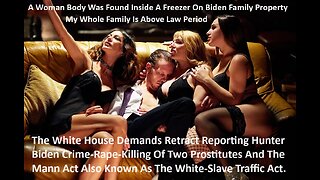 14:07
14:07
What If Everything You Were Taught Was A Lie?
17 days agoWhite House Demands Retract Reporting Hunter Biden Crime-Rape Allegations
10.8K5 -
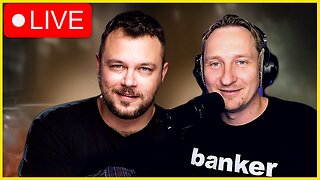 2:27:40
2:27:40
WeAreChange
5 hours agoIt’s NOT Just The Frogs — They’re Turning All The Animals GAY??
46.6K30 -
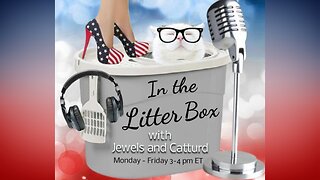 1:02:40
1:02:40
In The Litter Box w/ Jewels & Catturd
23 hours agoPolice State | In the Litter Box w/ Jewels & Catturd - Ep. 570 - 5/17/2024
63.5K50 -
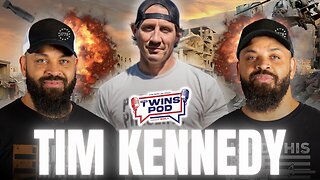 1:57:17
1:57:17
Twins Pod
6 hours agoTwins Pod - Episode 13 - Tim Kennedy: Seals Vs Green Berets, Tigers Vs Bears, & Israel Vs Palestine
58.8K25 -
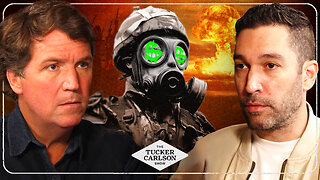 2:21:43
2:21:43
Tucker Carlson
1 day agoDave Smith: Russia, Israel, Trump & the Swamp, Obama, and the Media Attacks on Joe Rogan
147K416 -
 59:55
59:55
shaneyyricch
6 hours agoPERMANENTLY BANNED ON YOUTUBE - LETS RUMBLE
33.4K19 -
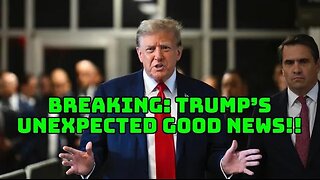 3:23
3:23
Stephen Gardner
5 hours agoNew Trump Testimony DESTROYS Michael Cohen HUSH MONEY case!
36.3K22 -
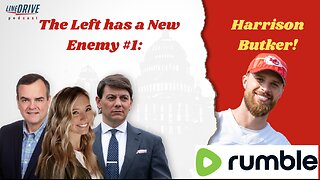 39:11
39:11
Line Drive Podcast
6 hours agoHarrison Butker is the left's new Enemy #1!
36.9K14 -
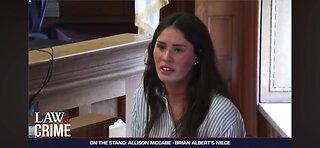 7:10:22
7:10:22
Turtleboy Daily News
12 hours agoKaren Read Trial Day 14
70.6K27 -
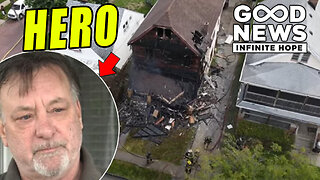 1:29:10
1:29:10
Nina Infinity
21 hours agoGOOD NEWS - Infinite Hope # 185
42.3K9